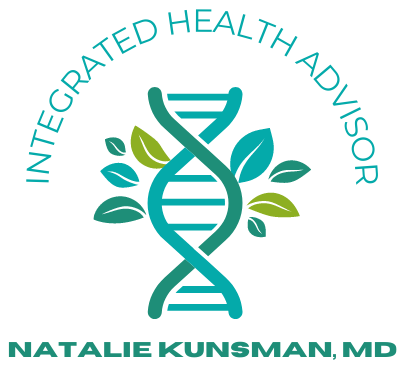This is the first part in the series discussing the “Four Hs “of skin care. The skin is our largest organ, and the principles in the “Four Hs” approach can be attributed to overall good health. If you master your skin health, you can master your global health. Hydration principles are systemic as well as topical. The discussion is more intricate than just drinking more water. I have been in this profession over twenty-five years, suffered with psoriasis, sensitive skin, sunburning, and rosacea prone skin. The skin is my mission. Hydration is factor number one and within your power to correct.
Simple skin anatomy describes three layers of the skin including the epidermis, dermis, and hypodermis. The outermost layer of the skin in this first epidermal layer (stratum corneum) helps us hold water and keep us waterproof as well as producing melanin for our pigment. If the stratum corneum is doing its job well, we have a glowing, healthy, and hydrated surface to our skin. We are not as waterproof as a dolphin, but we do have a matrix of fats and lipids interwoven with keratin protein filaments in this outermost layer which behaves as a mortar in between those brick-like cells (corneocytes) which will repel water. Strongly bonded to the epidermis is the middle layer (dermis). It is a thicker layer that is subdivided into two layers.
The dermis is quite busy since it has hair follicles, secretes sebum as our oil substance, produces sweat to regulate our temperature, holds nerve endings, and supports the epidermis with strength, flexibility, and blood nutrients to help transport them in between the layers. As the bottom most layer, the hypodermis connects the other layers to the muscles and bones, and with its rich fat and stores and blood vessels it will protect and insulate our body as well as store energy within that adipose. Conclusively, hydration does not only require water. It requires help to those structures and substances that form a fortress to hold a rich thick wall around the rest of our integument.
Internal Hydration :
. Knowing that our skin is composed of more substances than just water, we need to assure that our protein matrix (collagen and support proteins), fatty layers, circulatory layers, and our water is optimal. Stating the obvious, drinking more water will always be the first step.
· Clean water is a topic that could be discussed for years but suffice to add at least 2.7 liters per day for women. That sounds like a lot because it is, and most of us (myself included) must consciously add that to our day.
· Supplying your body of veggies that contain water can be part of the fluid total intake but added into good vegetation is the antioxidant benefits that will keep our protein and collagen support system nourished and vigorous.
· Be careful of negative waters! This includes caffeinated and sugary drinks that do not hydrate but pull the hydration out of your system. Sugar will attract the H2O molecules for excretion, and caffeine will block ADH hormone such that drinking ten ounces of fluid may produce 12-16 ounces of urine output (crude estimate).
· If your skin holds fat you need to eat fat! The best fats are the omega-3 fatty acid building blocks. Sources having these are the fishes, nuts, and olive oil. The purity of the oils is necessary, so be careful to avoid the vegetable, safflower, highly processed olive oils. Those types of oils can go rancid and contain considerable amounts of Omega 6 and 9 oils. Even an organic avocado can supply Omega-3 oils and plump that dermis to keep that hydration where it belongs.
· A major component of the skin’s structure is collagen, a protein. The elasticity and hydration require collagen and its bio-manufacturing of the elastin and fibrillin. Will supplementing with collagen get to the skin? Yes, indeed! Collagen comes in its original form, but there is also hydrolyzed collagen that has been broken down to easier to digest amino acids for better absorption. Better absorption means better retention of fluid in the skin. Just know that collagen peptides refer to this exact process of broken-down collagen molecules and will come in the form of powders.
External Hydration
· Focusing on the environmental “outside” approaches to hydration may seem simple but adding humidification to your environment may slow down your losses. If you live in a very dry climate as I do most of the year, you are evaporating out your water far more than someone in a humid climate. Create a humid environment with simple engineering in the house with your heating system or simple humidifier by your bed.
· Take short tepid showers. The hotter the water the more water that will evaporate into the shower.
· I continually stress that you would like to look for body washes and not stripping soaps. There is a key difference between the washes that can lock in moisture with such ingredients as hyaluronic acid and soaps that will astringently strips sebum and oils from the surface. Consider cream washes, African “soaps” with butters, non-foaming, non-abrasive face cleansers.
· Do not strip the skin with the chemistry of exfoliating ingredients such salicylic or glycolic acid (and several others). They might be necessary for acne-prone skin and scheduled rejuvenations, and but certainly not for dry skin. This over cleansing will behave as an irritant as the skin starts “starving” for moisture. It is no different than overprocessed hair that looks brittle and parched.
· Good skin care lines know the benefits of humectants, which are ingredients designed to draw the moisture inward. Look for the key substances such as hyaluronic acid and glycerin. If you are new to these ingredients, they may feel thick, but this is what the skin is begging you for!
· “Occlusives” are great protectants of the skin. The molecule size of the petrolatum, mineral oil, baby oil, and natural waxes stays on the skin act as a protective barrier, especially if the underlying skin is chaffed or abraded. Theses substances will not penetrate the skin given its molecular weight, but they will create a blockade and prevent water loss at the epidermal layer.
· The final category of skincare ingredients includes the emollient family. These compounds will soften the skin and in so doing will trap in moisture. The race for a great skincare product to improve barrier protection is the driving force behind having an excellent quality emollient in the base. I am partial to the ceramides, squalene, fatty acids, and shea butter.
Throughout my professional career in family and functional medicine I have seen the outward expression of dehydration as it reflects itself on the skin’s appearance. I have been a patient as well as a physician in this ever-evolving field. Taking care of this large organ will help you develop great habits to fix internal issues. I have also spent many years evaluating product lines in the medical and cosmeceutical industry. We will address the “help” part of my skincare approach, which is where the competitive product lines reap their best benefits for fixing aging and inflamed skin. Take the holistic approach and consult with your private physician regarding your trouble zones with your skin. Suffice to say that my leaders in the industry include: Neova, Perricone, Jan Marini, Skinceuticals, Arbonne. Part of the corrective ingredients will include excellent barrier protection and use of humectants, occlusives, and emollients and promote the first “H” of skincare, which is hydration.






Comments are closed.